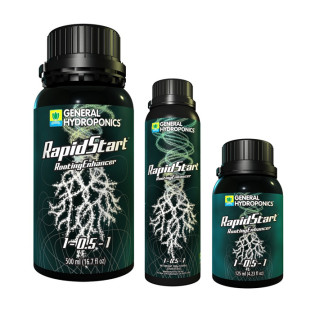
If you want a beautiful, unique blooming plant during the holiday season, you need to learn how to grow and care for a christmas cactus.
The Christmas cactus is a part of a unique cacti family, which also includes the Easter cactus and the Thanksgiving cactus.
While the nomenclature can be somewhat confusing, the Christmas cactus (or Schlumbergera bridgessii), is actually an easy to grow, all-seasons plant.
In fact, this gorgeous winter-flowering houseplant is the perfect addition to any household. If you want to wow your guests with an impressive flowering plant, this is it.
Easy to propagate and even easier to care for, we're going to teach you everything you need to know about this plant. Here’s what you need to know about how to grow Christmas cactus.
What Is A Christmas Cactus
The Christmas cactus has been a cherished cultural tradition since the early 1800s. Often given as a gift during holiday celebrations, this is a common houseplant that is easy to grow.
This is a plant that you typically won't find in nature. It's actually bred from two plants native to South America.
The Christmas cactus can grow up to two feet tall, though it often remains much smaller in a home environment.
Where Does The Christmas Cactus Get Its Name?

It's named Schlumbergera after a Frenchman who first collected cacti and other succulents in the 1800s. Why is it so closely connected to the holidays?
There are plenty of theories as to why, but most people believe that it’s because the plant has colorful flowers that are reminiscent of the cheer of the holiday season.
With blooms ranging from purple to white, depending on the type, this flowering succulent can add a lot of holly jolly to your Christmas season (or any season of the year, for that matter!).
What Are The Different Types Of Holiday Cactus?

One lesser-known fact about the Christmas cactus is that there are multiple types you can grow - it’s not just a single species.
There are actually five species of this plant that are grouped into two separate categories - Buckley and Truncata.
The most common are Russelliana, Orssichiana, Microsphaera, Kautskyi, and Opuntioidies.
Of these, the three most common are those that are named for the time of year when their blooms appear - Christmas cactus, Thanksgiving cactus, and Easter cactus.
You've learned enough background information about this plant, now, let's teach you what you really came here to learn: how to grow and care for a Christmas cactus.
How To Grow A Christmas Cactus: Step by Step

Planting a Christmas cactus is relatively easy. You have two options - you can grow it from seed or propagate it from a Christmas cactus cutting.
We'll discuss both, and let you choose which option makes more sense for you.
How To Grow A Christmas Cactus From Cuttings
If you’d like to propagate from a cutting, this is known as cloning a plant. You will need to take a small Y-shaped piece from the tips of the stems.
The cutting should only be taken from healthy plant foliage - therefore, this method isn’t the best idea if you have a plant that is weak or dormant.
After taking your cutting, plant it about a quarter of its length deep in your container. The soil should be well-draining or even perhaps a bit sandy.
Keep the soil moist and place your container in an area that receives bright, indirect sunlight.
When you’re ready to root a cutting for a new plant, cut the shoots from the tips, removing the plant at the second joint of each tip. It will begin to grow within just a few weeks, and you can then transfer it to a new container if necessary.
For best results, we recommend using a rooting gel to improve the speed at which your cuttings root. This will also increase your overall success rate, as it's inevitable not all your cuttings will root.
Simply dip the exposed end of your cutting into the gel, and swirl it around. Then, place it in a cloning machine, or directly into a rockwool cube to take root.
How To Grow A Christmas Cactus From Seed

You can also grow your Christmas cactus from seed. This can be a bit more challenging as it takes more time.
However, you’ll have more control over the final product and it can also be less expensive, as you won’t have to have a mature plant to start with.
Starting seeds is not the most difficult thing in the world, as long as you have the right tools and know-how. Our complete guide on starting seeds is a good place to start if you're new to this.
After that, simply grab the seed starting supplies you need and you can get to germinating those babies!
How To Care for A Christmas Cactus

Your work isn’t done once your seeds or cuttings have rooted and been planted! Now it’s time to care for your Christmas cactus.
Fortunately, caring for a Christmas cactus isn’t very labor-intensive or complicated. In fact, that’s just one reason why this plant is such a popular choice when it comes to houseplants.
It grows well under the conditions that are already present in most households - such as bright, indirect light and moderate temperatures.
Your plant can survive in lower light conditions (like what you might find during the winter months), but it will bloom more brightly and vigorously if you can give it brighter light.
Direct sunlight is best avoided, though, as it can burn the delicate leaves of the plant. When it comes to temperatures, the usual temperature range found inside most homes should do the trick (think between 60 and 70 degrees Fahrenheit).
Ensuring Proper Moisture Uptake For Your Christmas Cactus

You will need to provide your plant with average- to high- levels of humidity, too, as humidity can be a challenge in most homes (especially during the winter months).
To make sure your plant is getting the right levels of humidity, place it on a tray of pebbles and fill the tray with water. Adequate moisture is essential for this plant.
Make sure you frequently and thoroughly water the plant, particularly during its most active growth periods in the spring and summer months.
Try to keep the soil moist but don’t worry if you forget to water occasionally - the plant can tolerate some drying out between watering intervals.
In fact, it’s better for you to allow the plant to dry out slightly than to let it get too saturated. Never let the plant’s roots sit in water, as this can cause stem and root rot. Learn more about how to properly water plants in our blog.
Feeding Your Christmas Cactus Plant Nutrients/Fertilizer
Like most plants, Christmas cacti do need some form of plant food, but not as often as some plants.
As we'll explain in a moment, you should up the feeding when trying to get your plant to bloom.
In general, you should fertilize once every other week or so. Just use a general houseplant fertilizer. You want a good balance of the big 3 - nitrogen, phosphorus, and potassium.
How To Get Your Christmas Cactus To Bloom

Christmas cacti won't bloom on their own most of the time. They need a little encouragement and support by you, the grower.
This is actually not a complicated chore. All you really need to do is tweak the plant's nutrition and lighting. Feeding some bloom boosters is a good idea to increase the flowering capabilities of your plant.
Then, you need to ensure the plant gets plenty of darkness - at least 12-14 hours a day.
This can be accomplished by using a grow tent with a grow light, or simply putting the plant in a closet. Within a few weeks of this increase in darkness, flowers should begin developing.
Pruning Your Christmas Cactus
Regular pruning is not necessary, but you will want to take some extra steps to keep the plant healthy during its dormant period.
Dormancy usually takes place about six to eight weeks into the fall. If you do decide to prune, you can do this after the blooms have died - this will encourage the stems to branch out.
Just remove a few sections with a sharp blade to get this done. You’ll know it’s time for the plant to go dormant because it will stop flowering.
To help it naturally enter the dormancy period, reduce moisture, light, and temperature. The plant should get at least 12 hours of darkness per day and be kept in lowered temperatures of around 50 degrees.
If you keep your Christmas cactus for quite some time, you may need to repot it. This is especially true if you purchased the plant and it came in a small pot.
Christmas Cactus Problems, Pests & Diseases To Watch For
One of the most important parts of learning how to grow & care for a Christmas cactus is knowing what to watch for in terms of issues.
Fortunately, there are very few issues that plague the Christmas cactus, although you will want to keep an eye out for a few different pests and diseases.
One of the most common pests of all household plants is the spider mite. This pest will create webs on the leaves of your plant, but fortunately, it can be controlled with a bit of insecticidal soap. It’s easy to prevent spider mites by keeping your houseplants dusted.
Fungus gnats are also common. The good news is that these pose more problems to you, the gardener, than they do to the plant.
You can combat them by using insecticidal soap and by keeping the soil adequately moist (and not too soggy). If you want to learn more, check out our guide on when and how to use insecticidal soap.
There are several diseases to keep an eye out for, too. One of the most prevalent is phytophthora root rot. The effects of this disease can, again, be mitigated by keeping the soil adequately moist.
The same goes for botrytis blight, another disease that tends to plague tropical succulents.
While watching humidity levels and optimizing ventilation can help prevent these parasitic and fungal diseases, using a fungicide and removing infected plants can combat them in most cases.
Final Thoughts On How To Grow & Care For A Christmas Cactus
Now that you know how to grow & care for a Christmas cactus plant, you’re ready to get started. Grab your seeds or clones along with any supplies you might need.
Here at Hydrobuilder, we carry the best brands and products at the best prices you’ll find online. Plus, we provide world-class service every step of the way.
So what are you waiting for? The holidays are fast approaching and a Christmas cactus (or a Thanksgiving or Easter cactus, depending on the season!) will make the perfect gift.










































